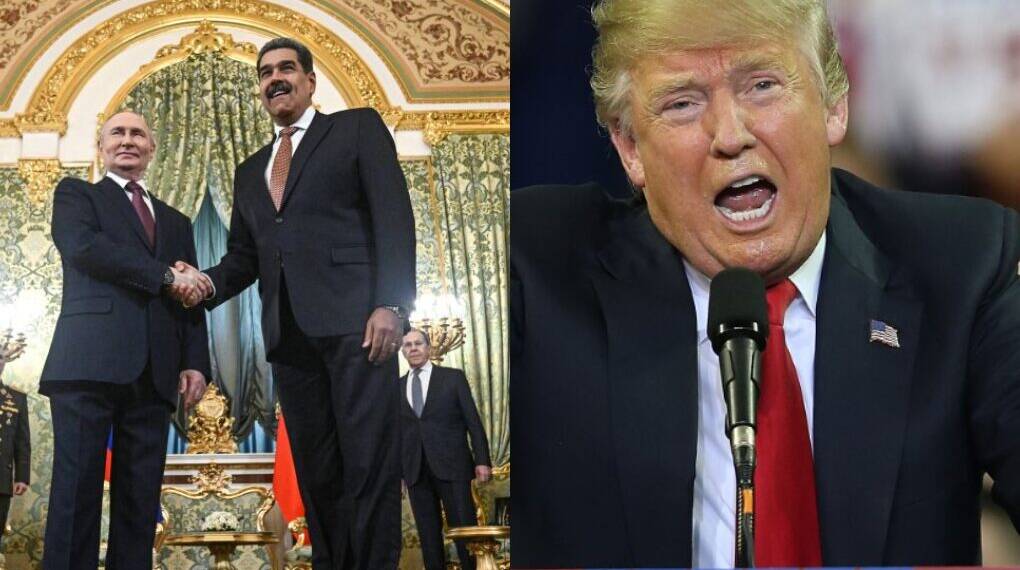A tense maritime encounter in the Caribbean has ignited global speculation about whether the United States is quietly escalating economic and military pressure on Venezuela under the banner of counter-narcotics operations.
The incident, involving a Russian tanker and a U.S. Navy destroyer, has raised questions about sanctions enforcement, strategic encirclement, and the future of Venezuelan oil lifelines now deeply intertwined with Russian support.
A Sudden U-Turn at Sea
On November 13, 2025, the Russian-affiliated oil tanker Seahorse abruptly altered its course while approaching Venezuela’s eastern coastline. The tanker—loaded with roughly 30,000 tons of naphtha essential for Venezuela’s heavy crude processing—was forced to turn away after the U.S. Navy destroyer USS Stockdale maneuvered directly across its path in international waters near the Venezuelan coast.
The encounter unfolded without any shots fired, warnings confirmed, or boarding attempts, yet the implications were unmistakable. After turning away, the Seahorse attempted twice more to approach Venezuelan ports, only to retreat again. The vessel now remains idling in the Caribbean, unable to complete its delivery.
The incident appeared to be a message: U.S. naval assets are now actively disrupting the Russia–Venezuela oil corridor that has become vital to Caracas’ struggling economy.
A Tanker with a Shadow Fleet Past
The Seahorse, a vessel long associated with Russia’s so-called “shadow fleet” of sanction-evading tankers, has become a focal point in the larger confrontation. Sanctioned by both the UK and EU earlier in 2025, the tanker is known for shifting flags, names, and ownership records—classic traits of vessels used to bypass restrictions on Russian crude and refined products.
With Venezuela’s oil production dependent on imported diluents like naphtha, shipments from Russia have become indispensable. U.S. sanctions halted American supplies years earlier, leaving Moscow as the country’s primary source for the chemicals needed to convert and export its ultra-heavy Orinoco crude.
Blocking even one shipment can significantly disrupt the fragile Venezuelan oil sector—now producing under a million barrels per day and fighting to stay afloat amid international restrictions, declining infrastructure, and political turmoil.
The U.S. Naval Buildup: Coincidence or Strategy?
The U.S. intercept of the Seahorse comes against the backdrop of an unprecedented American military buildup in the Caribbean. Since September, Washington has deployed:
A nuclear-powered aircraft carrier
Over a dozen warships
F-35 fighter squadrons operating from Puerto Rico
P-8 surveillance aircraft
B-52 bombers performing regional “attack demonstrations”
This force presence is officially framed under Operation Southern Spear, a Trump-era initiative targeting what Washington calls “narco-terrorist networks” operating from Venezuela and neighboring regions.
Yet critics argue that the scale and composition of the deployment far exceed typical counter-narcotics logistics. The use of advanced destroyers, carrier strike groups, and strategic bombers suggests a broader mission—one that aligns more closely with geopolitical containment than drug interdiction.
New NOTAM Sparks Fears of Escalation
On November 21, the U.S. Federal Aviation Administration issued a NOTAM—a Notice to Air Missions—over the Venezuelan Flight Information Region, warning pilots of a “potentially hazardous situation” due to heightened military activity.
The alert coincided with a U.S. Air Force B-52 bomber drill in the region, supported by KC-135 refuelers and escort fighters.
The timing was enough to fuel speculation:
Was the U.S. preparing surgical strikes?
Was this a prelude to a broader blockade?
Were American forces positioning for further disruption of Venezuela’s trade routes?
Although Washington has not commented directly, analysts view the NOTAM as part of an expanding pressure campaign intended to intimidate and isolate the Maduro government.
Russian Venezuelan Oil Alliance Under Threat
At the center of the confrontation lies a deepening strategic partnership between Russia and Venezuela. Earlier in 2025, both nations signed a 10-year energy agreement involving joint ventures, field modernization, and commitments to maintain oil flows despite Western sanctions.
For Moscow, Venezuela represents a geopolitical foothold in the Western Hemisphere.
For Caracas, Russia is a crucial lifeline—militarily, diplomatically, and economically.
Recent moves include:
Renewal of joint oil ventures until 2041
Expanded Russian investments in Venezuelan fields
Increased military cooperation, including advisors and air defense systems
Growing trade in sanctioned oil to markets in Asia
By preventing shipments like the Seahorse’s, Washington signals that Russia cannot guarantee safe transport or delivery in the Caribbean—a strategic blow to both nations.
Oil, Not Drugs: What Is Washington’s Real Motive?
The U.S. insists its operations target drug cartels linked to Venezuelan networks. However, Washington’s own drug threat assessments have downplayed Venezuela’s role as a major conduit, leading many observers to conclude that narcotics may be a convenient public rationale rather than the core objective.
What the Seahorse incident makes clear is that oil, not cocaine, is at the center of this confrontation.
Oil funds Venezuela’s government.
Oil facilitates Russia’s sanctions evasion.
Oil shapes global markets that the U.S. seeks to influence.
Disrupting Russian Venezuelan shipments is a strategic move that weakens both regimes simultaneously.
A Region on the Brink
As the Seahorse drifts uncertainly in Caribbean waters, it has become a symbol of Venezuela’s geopolitical vulnerability—and of the rising tensions between global powers playing out in Latin America.
A full blockade, even an informal one, would devastate Venezuela’s already-collapsed economy, send energy markets into turmoil, and risk sparking a wider confrontation with Russia.
For now, Washington’s strategy appears to be one of calibrated pressure: disrupt shipments, raise risks, and force Caracas to reconsider its alliances.
But the powder keg is real.
Any miscalculation—at sea or in the air—could trigger escalation with consequences far beyond the Caribbean.
In the shadow of warships, sanctions, and strategic oil politics, the region faces a turbulent and uncertain future.








